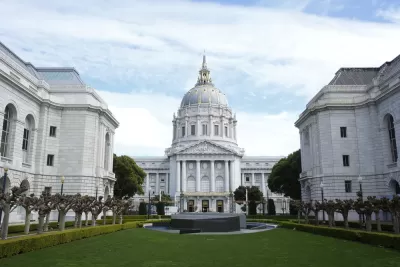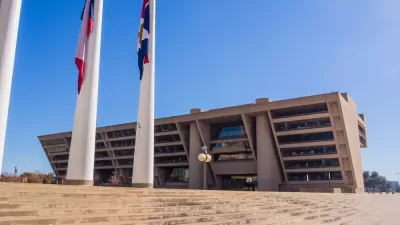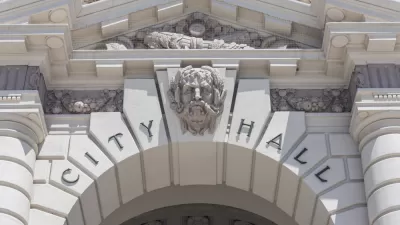The National League of Cities has released its annual report aggregating the "State of the City" speeches from over 100 U.S. mayors, revealing the ambitions and concerns of the nation's local leadership.

Kelsey E. Thomas shares news of the latest release of the National League of Cities' annual report on 120 state of the cities speeches delivered in 2017.
From its analysis, the report finds one "abundantly clear" takeaway: "Mayors are taking a bigger lead on poverty, racial disparities and other social issues than ever before, and tackling projects such as after-school programs, paid leave, minimum wage and immigration."
There are several obstacles standing in the way of this new trend in mayoral agenda setting: namely the proposed federal cuts to social safety nets and efforts in some states to preempt local control.
Tracking mayoral sentiments on ten major issues, the report identifies slight shifts in priorities compared to 2016 speeches. According to Thomas there were a few important changes from previous years,
…including healthcare’s jump from the 10th concern to the eighth — potentially fueled by talks of repealing the Affordable Care Act, which inspired 60 mayors to warn Congress about possible negative impacts. Infrastructure and housing also moved slightly up in mentions, while budgets and education moved slightly down. Economic development remained the top issue, as it has since 2014.
The article also includes infographics from the report that help illustrate some of the report's biggest takeaways. Planetizen shared news of the annual report previously in 2016 and 2015.
FULL STORY: What 120 U.S. Mayors Say About the “State of the City”

Planetizen Federal Action Tracker
A weekly monitor of how Trump’s orders and actions are impacting planners and planning in America.

Congressman Proposes Bill to Rename DC Metro “Trump Train”
The Make Autorail Great Again Act would withhold federal funding to the system until the Washington Metropolitan Area Transit Authority (WMATA), rebrands as the Washington Metropolitan Authority for Greater Access (WMAGA).

The Simple Legislative Tool Transforming Vacant Downtowns
In California, Michigan and Georgia, an easy win is bringing dollars — and delight — back to city centers.

The States Losing Rural Delivery Rooms at an Alarming Pace
In some states, as few as 9% of rural hospitals still deliver babies. As a result, rising pre-term births, no adequate pre-term care and harrowing close calls are a growing reality.

The Small South Asian Republic Going all in on EVs
Thanks to one simple policy change less than five years ago, 65% of new cars in this Himalayan country are now electric.

DC Backpedals on Bike Lane Protection, Swaps Barriers for Paint
Citing aesthetic concerns, the city is removing the concrete barriers and flexposts that once separated Arizona Avenue cyclists from motor vehicles.
Urban Design for Planners 1: Software Tools
This six-course series explores essential urban design concepts using open source software and equips planners with the tools they need to participate fully in the urban design process.
Planning for Universal Design
Learn the tools for implementing Universal Design in planning regulations.
Smith Gee Studio
City of Charlotte
City of Camden Redevelopment Agency
City of Astoria
Transportation Research & Education Center (TREC) at Portland State University
US High Speed Rail Association
City of Camden Redevelopment Agency
Municipality of Princeton (NJ)




























